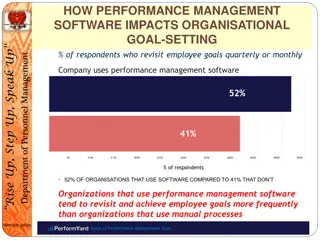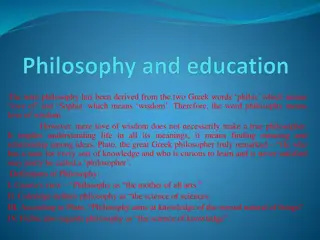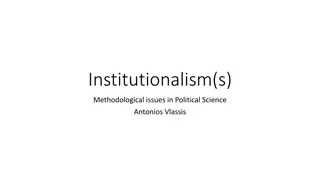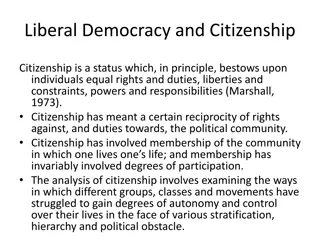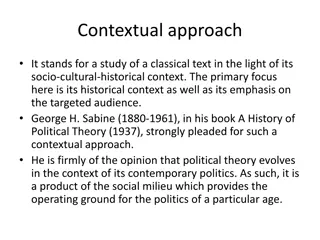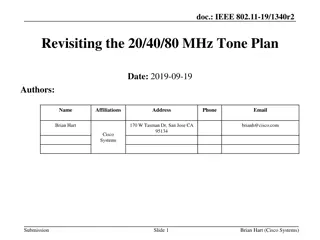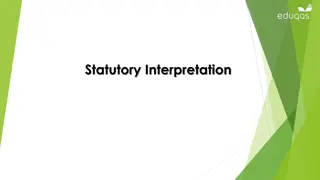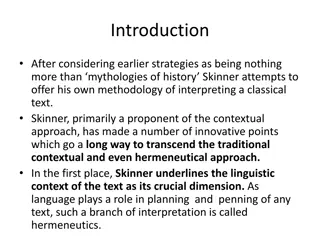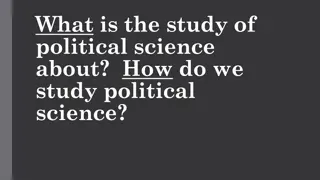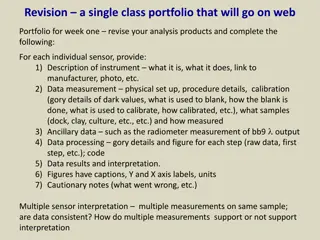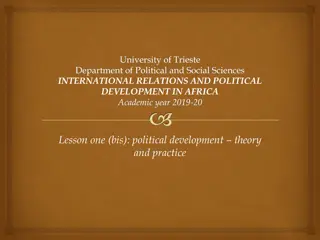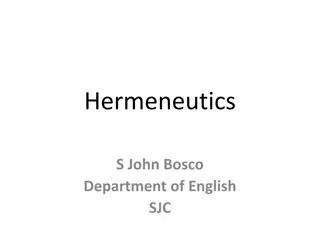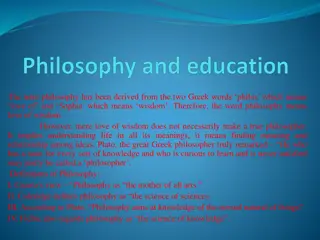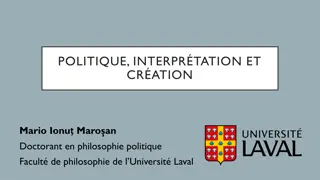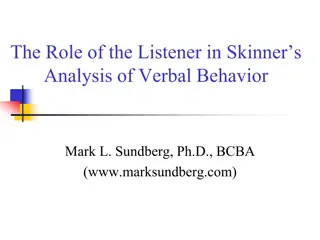Revisiting Skinner's Approach to Political Philosophy Interpretation
Skinner's approach, as part of the Cambridge New History School, challenges traditional methods of interpreting political philosophy texts. He critiques existing approaches for overlooking authorial intention and leading to flawed conclusions. By advocating for a historically sensitive reading, Skinner's work enriches contextual interpretation significantly.
Download Presentation

Please find below an Image/Link to download the presentation.
The content on the website is provided AS IS for your information and personal use only. It may not be sold, licensed, or shared on other websites without obtaining consent from the author.If you encounter any issues during the download, it is possible that the publisher has removed the file from their server.
You are allowed to download the files provided on this website for personal or commercial use, subject to the condition that they are used lawfully. All files are the property of their respective owners.
The content on the website is provided AS IS for your information and personal use only. It may not be sold, licensed, or shared on other websites without obtaining consent from the author.
E N D
Presentation Transcript
Introduction: Why Skinners Approach Deserves a Detailed Investigation? Skinner along with his co-historians namely John Dunn and J.G.A. Pocock have come to constitute the Cambridge New History School, which has made a seminal contribution to the theory of interpretation relating to political philosophy. Skinner published a seminal essay Meaning and Understanding in the History of Ideas (1969), which turned out to be a milestone in the art interpreting the history of ideas. In this essay, Skinner pointed out the inadequacies of earlier methods of textual interpretation, calling it mythologies .
Introduction: Why(Contd.) Though broadly taking a contextual approach, he provided his own perspective-a historically more sensitive approach to reading and interpreting a classical text of political philosophy. The primary focus here is to present a critical summarized version of his essay Meaning and Understanding in the History of Ideas , which forms a part of his Visions of Politics. The real worth of this essay is that while underlining the centrality of contextual approach, it enriches and even transcends the assumptions behind the contextual approach.
Introduction: Why(Contd.) This essay is divided into two parts. In the first part, Skinner takes a critical view on the study of the history of ideas and offers his own criticisms on it as a discipline. In the second part, Skinner elaborates his perspective on reading and interpreting a text. His approach would be reviewed and evaluated in its entirety.
Existing Approaches and their Inadequacies In the initial part of his essay he raises a number of questions against the basic assumptions of the textual approach to interpretation as well as against the prevailing contextual approach. Skinner refers to the two ways in which political thought has been handled so far. One, political thinkers and their thoughts have been handled in chronological order such as studies which deal with thinkers from Plato to Marx. The second way in which such studies are organized is a thematic basis or unit ideas , viz., justice, equality, political obligation, consent and so on and so forth.
Existing Approaches and their Inadequacies However, with both these ways, Skinner maintains, there are problems in abundance. Whether textual or contextual approach, in both these cases, authorial intention is ignored. As a result, several kinds of mythologies occur. Besides, both of these approaches lead to faulty conclusions which have already been discussed earlier. A textualist interpreter s primary focus is on the text due to the her/his belief that the ageless wisdom is inherent in the text itself. S/he also aims to underline its present relevance in the process.
Existing Approaches and their Inadequacies (Contd.) That results in several kinds of mythologies or what Skinner calls historical absurdities. Three absurdities are identified by Skinner as: i) Mythology of Doctrines, ii) mythology of coherence, and iii) mythology of prolepsis.
. Mythology of Doctrines According to Skinner a mere concentration on the textual reading leads to several doctrines being credited to the author and her/his text, though in actual fact they are non-existent. In the first place, even some incidental remarks made by the author are taken to be an exposition of doctrine on the themes of the text.
Mythology of Doctrines (Contd.) Skinner illustrates his formulation by giving a concrete example of Marsilius of Padua (1275- 1343). Marsilius had made some remarks in his works regarding the executive role of the rulers and the legislative role of the people. But a textualist interpreter might take it as being an enunciation of the principle of separation of power. But the fact of the matter is that it was Montesquieu (1689-1755) who was its real exponent and Padua had hardly anything to do with it.
Mythology of Doctrines (Contd.) A second form of such a mythology occurs when on the basis of a chance similarity of terminology used, a classical writer is credited with certain basic ideas with which s/he might have been totally unfamiliar. In support of his contention, Skinner gives the example of Edward Coke (1552-1634), an English jurist. Coke had suggested to James 1, the king of England, that the customary law is much more important than the will of the sovereign. But subsequent writers started taking him as the originator of the system of judicial review, which came in the context of the American constitution-a much later development.
Mythology of Doctrines (Contd.) A third absurdity occurs when a classical writer is assigned with a specific meaning of a particular term-a meaning s/he never meant. For instance, an English theologician, Richard Hooker (1554- 1600) made some casual remarks about the sociability of man. That has prompted a modern commentator to take him as an exponent of the social contract theory which is an example of another absurdity a mere textual approach might produce.
Mythology of Coherence According to Skinner such an absurdity occurs when a deliberate and concerted approach is made to find consistency/coherence in terms of ideas while subjecting a classical text/author to a close, textual reading. This kind of an attempt to find coherence of ideas, where it is non-existent, might result in two types of distortions: i. One, in this process, certain segments of author s ideas might be totally ignored or might be put on the back-burner; ii. Two, superimposition of such an ideational coherence might preclude the possibility of intellectual growth/evolution of a classical writer.
Mythology of Coherence (cont.) In other words, such an approach might reject the possibility of a writer going through entirely different intellectual phases. For example, there is a great divergence between, what is being called, the early Marx and the later Marx- Marx of Economic and Philosophical Manuscript and Marx of Das Capital. Marx emerging from the former is humanistic, whereas Marx of the latter is more dogmatic. But a number of interpreters in their zeal to superimpose ideological coherence either ignore the former or distort it.
Mythology of Prolepsis Prolepsis stands for the representation of a thing as existing before it actually does . Skinner claims that such a mythology is generated when we are more interested in the retrospective significance of a given episode than its meaning for the agent of the time . In other words, a mythology of prolepsis occurs whenever there is a marked difference between the actual meaning of a historical episode and its alleged significance perceived by a subsequent interpreter.
Mythology of Prolepsis (Cont.) Skinner illustrates this point by citing examples from the writings of Plato and Rousseau whom many writers have taken to be the supporters of totalitarianism. It is quite a different thing that heir works might have been used subsequently to justify totalitarianism, but on that account they could not be taken as supporters of such regimes.


